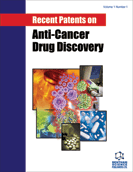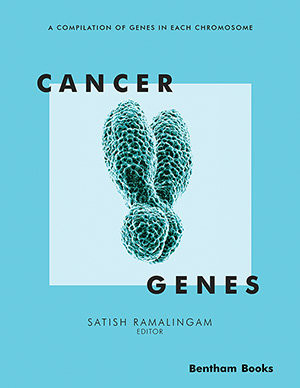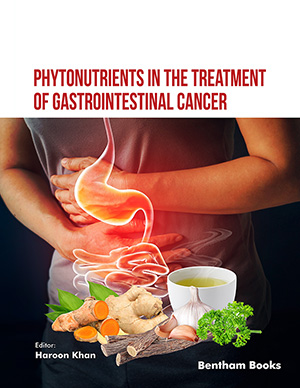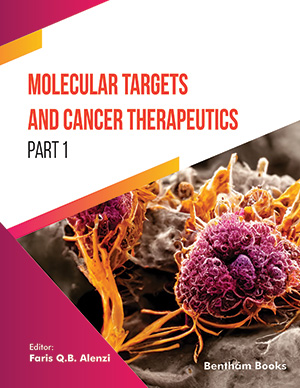[1]
Dupin E, Le Douarin NM. Development of melanocyte precursors from the vertebrate neural crest. Oncogene 2003; 22(20): 3016-23.
[2]
Goldgeier MH, Klein LE, Klein-Angerer S, Moellmann G, Nordlund JJ. The distribution of melanocytes in the leptomeninges of the human brain. J Invest Dermatol 1984; 82(3): 235-8.
[3]
Ballester Sanchez R, de Unamuno Bustos B, Navarro Mira M, Botella Estrada R. Mucosal Melanoma: An Update. Actas Dermosifiliogr 2014.
[4]
Lincoln R. A case of melano-sarcoma of the nose cured by galvanocauterization. NY Med J 1885; 42: 406-7.
[5]
Chang AE, Karnell LH, Menck HR. The National Cancer Data Base report on cutaneous and noncutaneous melanoma: a summary of 84,836 cases from the past decade. The American College of Surgeons Commission on Cancer and the American Cancer Society. Cancer 1998; 83(8): 1664-78.
[6]
Seetharamu N, Ott PA, Pavlick AC. Mucosal melanomas: a case-based review of the literature. Oncologist 2010; 15(7): 772-81.
[7]
Chaturvedi P, Lerra S, Gupta P, Pai PS, Chaukar DA, Agarwal JP. A study of mucosal melanoma of the oral cavity in India: a rare tumor. Ear Nose Throat J 2014; 93(8): E4-7.
[8]
McLaughlin CC, Wu XC, Jemal A, Martin HJ, Roche LM, Chen VW. Incidence of noncutaneous melanomas in the U.S. Cancer 2005; 103(5): 1000-7.
[9]
Hu DN, Yu G, McCormick SA, Finger PT. Population-based incidence of conjunctival melanoma in various races and ethnic groups and comparison with other melanomas. Am J Ophthalmol 2008; 145(3): 418-23.
[10]
Holmstrom M, Lund VJ. Malignant melanomas of the nasal cavity after occupational exposure to formaldehyde. Br J Ind Med 1991; 48(1): 9-11.
[11]
Poynter JN, Elder JT, Fullen DR, Nair RP, Soengas MS, Johnson TM. BRAF and NRAS mutations in melanoma and melanocytic nevi. Melanoma Res 2006; 16(4): 267-73.
[12]
Maldonado JL, Fridlyand J, Patel H, Jain AN, Busam K, Kageshita T. Determinants of BRAF mutations in primary melanomas. J Natl Cancer Inst 2003; 95(24): 1878-90.
[13]
Omholt K, Grafstrom E, Kanter-Lewensohn L, Hansson J, Ragnarsson-Olding BK. KIT pathway alterations in mucosal melanomas of the vulva and other sites. Clin Cancer Res 2011; 17(12): 3933-42.
[14]
Curtin JA, Busam K, Pinkel D, Bastian BC. Somatic activation of KIT in distinct subtypes of melanoma. J Clin Oncol 2006; 24(26): 4340-6.
[15]
Beadling C, Jacobson-Dunlop E, Hodi FS, Le C, Warrick A, Patterson J. KIT gene mutations and copy number in melanoma subtypes. Clin Cancer Res 2008; 14(21): 6821-8.
[16]
Kong Y, Si L, Zhu Y, Xu X, Corless CL, Flaherty KT. Large-scale analysis of KIT aberrations in Chinese patients with melanoma. Clin Cancer Res 2011; 17(7): 1684-91.
[17]
Ashida A, Takata M, Murata H, Kido K, Saida T. Pathological activation of KIT in metastatic tumors of acral and mucosal melanomas. Int J Cancer 2009; 124(4): 862-8.
[18]
Yun J, Lee J, Jang J, Lee EJ, Jang KT, Kim JH. KIT amplification and gene mutations in acral/mucosal melanoma in Korea. APMIS 2011; 119(6): 330-5.
[19]
Satzger I, Kuttler U, Volker B, Schenck F, Kapp A, Gutzmer R. Anal mucosal melanoma with KIT-activating mutation and response to imatinib therapy--case report and review of the literature. Dermatology 2010; 220(1): 77-81.
[20]
Satzger I, Schaefer T, Kuettler U, Broecker V, Voelker B, Ostertag H. Analysis of c-KIT expression and KIT gene mutation in human mucosal melanomas. Br J Cancer 2008; 99(12): 2065-9.
[21]
Schoenewolf NL, Bull C, Belloni B, Holzmann D, Tonolla S, Lang R. Sinonasal, genital and acrolentiginous melanomas show distinct characteristics of KIT expression and mutations. Eur J Cancer 2012; 48(12): 1842-52.
[22]
Sanchez AA, Wu TT, Prieto VG, Rashid A, Hamilton SR, Wang H. Comparison of primary and metastatic malignant melanoma of the esophagus: clinicopathologic review of 10 cases. Arch Pathol Lab Med 2008; 132(10): 1623-9.
[23]
Zaghi S, Pouldar D, Lai C, Chhetri DK. Subglottic presentation of a rare tumor: primary or metastatic? Primary mucosal melanoma of the subglottic larynx. JAMA Otolaryngol Head Neck Surg 2013; 139(7): 739-40.
[24]
Gavriel H, McArthur G, Sizeland A, Henderson M. Review: mucosal melanoma of the head and neck. Melanoma Res 2011; 21(4): 257-66.
[25]
Carvajal RD, Spencer SA, Lydiatt W. Mucosal melanoma: a clinically and biologically unique disease entity. J Natl Compr Canc Netw 2012; 10(3): 345-56.
[26]
DeMatos P, Tyler DS, Seigler HF. Malignant melanoma of the mucous membranes: a review of 119 cases. Ann Surg Oncol 1998; 5(8): 733-42.
[27]
Manolidis S, Donald PJ. Malignant mucosal melanoma of the head and neck: review of the literature and report of 14 patients. Cancer 1997; 80(8): 1373-86.
[28]
Thompson LD, Wieneke JA, Miettinen M. Sinonasal tract and nasopharyngeal melanomas: a clinicopathologic study of 115 cases with a proposed staging system. Am J Surg Pathol 2003; 27(5): 594-611.
[29]
Roth TN, Gengler C, Huber GF, Holzmann D. Outcome of sinonasal melanoma: clinical experience and review of the literature. Head Neck 2010; 32(10): 1385-92.
[30]
Terada T, Saeki N, Toh K, Uwa N, Sagawa K, Mouri T, et al. Primary malignant melanoma of the larynx: a case report and literature review. Auris Nasus Larynx 2007; 34(1): 105-10.
[31]
Reddy VS, Mykytenko J, Giltman LI, Mansour KA. Primary malignant melanoma of the lung: review of literature and report of a case. Am Surg 2007; 73(3): 287-9.
[32]
Taboada CF, McMurray JD, Jordan RA, Seybold WD. Primary melanoma of the lung. Chest 1972; 62(5): 629-31.
[33]
Ost D, Joseph C, Sogoloff H, Menezes G. Primary pulmonary melanoma: case report and literature review. Mayo Clin Proc 1999; 74(1): 62-6.
[34]
Cheung MC, Perez EA, Molina MA, Jin X, Gutierrez JC, Franceschi D. Defining the role of surgery for primary gastrointestinal tract melanoma. J Gastrointest Surg 2008; 12(4): 731-8.
[35]
Capizzi PJ, Donohue JH. Metastatic melanoma of the gastrointestinal tract: a review of the literature. Compr Ther 1994; 20(1): 20-3.
[36]
Cote TR, Sobin LH. Primary melanomas of the esophagus and anorectum: epidemiologic comparison with melanoma of the skin. Melanoma Res 2009; 19(1): 58-60.
[37]
Chute DJ, Cousar JB, Mills SE. Anorectal malignant melanoma: morphologic and immunohistochemical features. Am J Clin Pathol 2006; 126(1): 93-100.
[38]
Aguas SC, Quarracino MC, Lence AN, Lanfranchi-Tizeira HE. Primary melanoma of the oral cavity: ten cases and review of 177 cases from literature. Med Oral Patol Oral Cir Bucal 2009; 14(6): E265-71.
[39]
Takagi M, Ishikawa G, Mori W. Primary malignant melanoma of the oral cavity in Japan. With special reference to mucosal melanosis. Cancer 1974; 34(2): 358-70.
[40]
Notani K, Shindoh M, Yamazaki Y, Nakamura H, Watanabe M, Kogoh T. Amelanotic malignant melanomas of the oral mucosa. Br J Oral Maxillofac Surg 2002; 40(3): 195-200.
[41]
Patrick RJ, Fenske NA, Messina JL. Primary mucosal melanoma. J Am Acad Dermatol 2007; 56(5): 828-34.
[42]
Bisceglia M, Perri F, Tucci A, Tardio M, Panniello G, Vita G. Primary malignant melanoma of the esophagus: a clinicopathologic study of a case with comprehensive literature review. Adv Anat Pathol 2011; 18(3): 235-52.
[43]
Stringa O, Valdez R, Beguerie JR, Abbruzzese M, Lioni M, Nadales A. Primary amelanotic melanoma of the esophagus. Int J Dermatol 2006; 45(10): 1207-10.
[44]
Iwanuma Y, Tomita N, Amano T, Isayama F, Tsurumaru M, Hayashi T. Current status of primary malignant melanoma of the esophagus: clinical features, pathology, management and prognosis. J Gastroenterol 2012; 47(1): 21-8.
[45]
Jelincic Z, Jakic-Razumovic J, Petrovic I, Cavcic AM, Unusic J, Trotic R. Primary malignant melanoma of the stomach. Tumori 2005; 91(2): 201-3.
[46]
Elsayed AM, Albahra M, Nzeako UC, Sobin LH. Malignant melanomas in the small intestine: a study of 103 patients. Am J Gastroenterol 1996; 91(5): 1001-6.
[47]
Sugiyama VE, Chan JK, Shin JY, Berek JS, Osann K, Kapp DS. Vulvar melanoma: a multivariable analysis of 644 patients. Obstet Gynecol 2007; 110(2 Pt 1): 296-301.
[48]
Ragnarsson-Olding BK, Kanter-Lewensohn LR, Lagerlof B, Nilsson BR, Ringborg UK. Malignant melanoma of the vulva in a nationwide, 25-year study of 219 Swedish females: clinical observations and histopathologic features. Cancer 1999; 86(7): 1273-84.
[49]
Verschraegen CF, Benjapibal M, Supakarapongkul W, Levy LB, Ross M, Atkinson EN. Vulvar melanoma at the M. D. Anderson Cancer Center: 25 years later. Int J Gynecol Cancer 2001; 11(5): 359-64.
[50]
Gungor T, Altinkaya SO, Ozat M, Bayramoglu H, Mollamahmutoglu L. Primary malignant melanoma of the female genital tract. Taiwan J Obstet Gynecol 2009; 48(2): 169-75.
[51]
Reid GC, Schmidt RW, Roberts JA, Hopkins MP, Barrett RJ, Morley GW. Primary melanoma of the vagina: a clinicopathologic analysis. Obstet Gynecol 1989; 74(2): 190-9.
[52]
Frumovitz M, Etchepareborda M, Sun CC, Soliman PT, Eifel PJ, Levenback CF. Primary malignant melanoma of the vagina. Obstet Gynecol 2010; 116(6): 1358-65.
[53]
Buchanan DJ, Schlaerth J, Kurosaki T. Primary vaginal melanoma: thirteen-year disease-free survival after wide local excision and review of recent literature. Am J Obstet Gynecol 1998; 178(6): 1177-84.
[54]
Pusceddu S, Bajetta E, Carcangiu ML, Formisano B, Ducceschi M, Buzzoni R. A literature overview of primary cervical malignant melanoma: an exceedingly rare cancer. Crit Rev Oncol Hematol 2012; 81(2): 185-95.
[55]
Pacella M, Gallo F, Gastaldi C, Ambruosi C, Carmignani G. Primary malignant melanoma of the bladder. Int J Urol 2006; 13(5): 635-7.
[56]
Efesoy O, Cayan S. Bladder metastasis of malignant melanoma: a case report and review of literature. Med Oncol 2011; 28(Suppl. 1): S667-9.
[57]
Keller DS, Thomay AA, Gaughan J, Olszanski A, Wu H, Berger AC. Outcomes in patients with mucosal melanomas. J Surg Oncol 2013; 108(8): 516-20.
[58]
Goerres GW, Stoeckli SJ, von Schulthess GK, Steinert HC. FDG PET for mucosal malignant melanoma of the head and neck. Laryngoscope 2002; 112(2): 381-5.
[59]
Huellner MW, Cousin M, Linder T, Soyka JD, Bussmann C, Eberle L. Melanoma of the middle ear: initial presentation, Fluoro-2-deoxy-D-glucose positron emission tomography/computed tomography imaging and follow up. J Laryngol Otol 2011; 125(5): 536-9.
[60]
Inubushi M, Saga T, Koizumi M, Takagi R, Hasegawa A, Koto M. Predictive value of 3′-deoxy-3′-[18F]fluorothymidine positron emission tomography/computed tomography for outcome of carbon ion radiotherapy in patients with head and neck mucosal malignant melanoma. Ann Nucl Med 2013; 27(1): 1-10.
[61]
Kim HS, Kim EK, Jun HJ, Oh SY, Park KW. Lim do H. Noncutaneous malignant melanoma: a prognostic model from a retrospective multicenter study. BMC Cancer 2010; 10: 167.
[62]
Zhou HT, Zhou ZX, Zhang HZ, Bi JJ, Zhao P. Wide local excision could be considered as the initial treatment of primary anorectal malignant melanoma. Chin Med J 2010; 123(5): 585-8.
[63]
Kelly P, Zagars GK, Cormier JN, Ross MI, Guadagnolo BA. Sphincter-sparing local excision and hypofractionated radiation therapy for anorectal melanoma: a 20-year experience. Cancer 2011; 117(20): 4747-55.
[64]
Piura B. Management of primary melanoma of the female urogenital tract. Lancet Oncol 2008; 9(10): 973-81.
[65]
Owens JM, Roberts DB, Myers JN. The role of postoperative adjuvant radiation therapy in the treatment of mucosal melanomas of the head and neck region. Arch Otolaryngol Head Neck Surg 2003; 129(8): 864-8.
[66]
Moreno MA, Roberts DB, Kupferman ME, DeMonte F, El-Naggar AK, Williams M. Mucosal melanoma of the nose and paranasal sinuses, a contemporary experience from the M. D. Anderson Cancer Center. Cancer 2010; 116(9): 2215-23.
[67]
Benlyazid A, Thariat J, Temam S, Malard O, Florescu C, Choussy O. Postoperative radiotherapy in head and neck mucosal melanoma: a GETTEC study. Arch Otolaryngol Head Neck Surg 2010; 136(12): 1219-25.
[68]
Combs SE, Konkel S, Thilmann C, Debus J, Schulz-Ertner D. Local high-dose radiotherapy and sparing of normal tissue using intensity-modulated radiotherapy (IMRT) for mucosal melanoma of the nasal cavity and paranasal sinuses. Strahlenther Onkol 2007; 183(2): 63-8.
[69]
Fuji H, Yoshikawa S, Kasami M, Murayama S, Onitsuka T, Kashiwagi H. High-dose proton beam therapy for sinonasal mucosal malignant melanoma. Radiat Oncol 2014; 9: 162.
[70]
Yi JH, Yi SY, Lee HR, Lee SI. Lim do H, Kim JH. Dacarbazine-based chemotherapy as first-line treatment in noncutaneous metastatic melanoma: multicenter, retrospective analysis in Asia. Melanoma Res 2011; 21(3): 223-7.
[71]
Homsi J, Bedikian AY, Kim KB, Papadopoulos NE, Hwu WJ, Mahoney SL. Phase 2 open-label study of weekly docosahexaenoic acid-paclitaxel in cutaneous and mucosal metastatic melanoma patients. Melanoma Res 2009; 19(4): 238-42.
[72]
Chang W, Lee SJ, Park S, Choi MK, Hong JY, Kim YS. Effect of paclitaxel/carboplatin salvage chemotherapy in noncutaneous versus cutaneous metastatic melanoma. Melanoma Res 2013; 23(2): 147-51.
[73]
Bartell HL, Bedikian AY, Papadopoulos NE, Dett TK, Ballo MT, Myers JN. Biochemotherapy in patients with advanced head and neck mucosal melanoma. Head Neck 2008; 30(12): 1592-8.
[74]
Valsecchi ME, Sato T. The potential role of sunitinib targeting melanomas. Expert Opin Investig Drugs 2013; 22(11): 1473-83.
[75]
Tran A, Tawbi HA. A potential role for nilotinib in KIT-mutated melanoma. Expert Opin Investig Drugs 2012; 21(6): 861-9.
[76]
Hodi FS, Corless CL, Giobbie-Hurder A, Fletcher JA, Zhu M, Marino-Enriquez A. Imatinib for melanomas harboring mutationally activated or amplified KIT arising on mucosal, acral, and chronically sun-damaged skin. J Clin Oncol 2013; 31(26): 3182-90.
[77]
Guo J, Si L, Kong Y, Flaherty KT, Xu X, Zhu Y. Phase II, open-label, single-arm trial of imatinib mesylate in patients with metastatic melanoma harboring c-Kit mutation or amplification. J Clin Oncol 2011; 29(21): 2904-9.
[78]
Carvajal RD, Antonescu CR, Wolchok JD, Chapman PB, Roman RA, Teitcher J. KIT as a therapeutic target in metastatic melanoma. JAMA 2011; 305(22): 2327-34.
[79]
Todd JR, Becker TM, Kefford RF, Rizos H. Secondary c-Kit mutations confer acquired resistance to RTK inhibitors in c-Kit mutant melanoma cells. Pigment Cell Melanoma Res 2013; 26(4): 518-26.
[80]
Minor DR, Kashani-Sabet M, Garrido M, O’Day SJ, Hamid O, Bastian BC. Sunitinib therapy for melanoma patients with KIT mutations. Clin Cancer Res 2012; 18(5): 1457-63.
[81]
Min L, Hodi FS. Anti-PD1 following ipilimumab for mucosal melanoma: durable tumor response associated with severe hypothyroidism and rhabdomyolysis. Cancer Immunol Res 2014; 2(1): 15-8.























